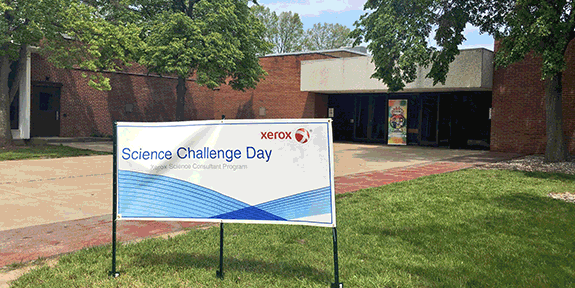By Real Business staff
Imagine hitting the road in a self-driving car that can detect changing traffic patterns, and adjust its direction and speed accordingly. A world where these smart cars are part of an integrated transportation network of connected cities, where data is being shared in real time, among vehicles and infrastructure.
Millions of sensors embedded in street signs, traffic lights and roads would relay relevant information about your commute, such as a traffic accident, icy roadways, or even a pedestrian in your path. No need for you to lift a finger, because the car and the road are talking, and they’ve got it all figured out.
This article was first published on RealBusiness.com, a website from Xerox that provides ideas and information for decision-makers in business and government.
It may sound like science fiction, but this is the city of the future: an intelligent transportation system where all moving parts are working together, allowing for less congestion and better, more efficient urban mobility. The technology powering smart cars and infrastructure already exists, but how do you design a connected transportation system that works at scale? Simple – build a simulated city.
Real Learning from a Simulated City
In a groundbreaking public/private partnership, the University of Michigan has created a 32-acre simulated city that brings us one step closer to changing transportation (or “mobility”) as we know it. The Mobility Transformation Center (MTC), designed to simulate traffic events and road conditions for automated and autonomous vehicles, is the largest test facility of its kind. Run in partnership with the U.S. Department of Transportation as well as 13 companies, including GM, Ford and Xerox— a leading innovator of transportation solutions —the MTC recreates the everyday driving experience, ranging from the unpredictable behavior of drivers and pedestrians to roadblocks, railroad crossings and aging infrastructure. When it’s fully developed, 30,000 cars will be deployed at the test facility and throughout Southeastern Michigan.
Both vehicle-to-vehicle (V2V) and vehicle-to-infrastructure communication (V2I) will be tested at the facility, which will include a four-lane highway, a downtown setting, winding roads and busy intersections, according to John Peracchio, a global expert in intelligent transportation systems.
The technologies allow cars to communicate with each other as well as smart traffic infrastructure, helping to create more efficient cities where the flow of traffic is regulated and seamlessly monitored. They also create a safer driving experience by detecting, predicting and avoiding potential accidents before they occur.
Essential Features in a Smart City
“In order for self-driving cars to be truly useful, compatible, connected infrastructure must be an integral part of a connected city,” Peracchio said. That’s where state and local Departments of Transportation come in, as well as innovative companies, such as Xerox.
At the MTC, researchers will be able to analyze how to design roads and “smart” intersections that work for self-driving cars, as well as pedestrians, bicyclists and public transit. Electric car charging stations will be integrated into roads, as an experiment to determine whether better and more widespread access to the stations would lead to increased adoption of electronic vehicles.
On a broader level, the project aims to change how people and goods move around, Peracchio noted. “The facility is designed to let us deploy technology to show innovation and test all kinds of aspects of automated and autonomous vehicle technology,” Peracchio added. “It’s a simulated city dedicated to intelligent systems.”
Data Brings Walking, Biking and Public Transit Together
Among the technologies being tested at the facility are mobile device and automotive information-based systems for transaction management solutions, in areas such as electronic tolling, transit fare collection, and smart parking. Xerox has already provided this type of technology for cities, including a recent yearlong pilot program in Los Angeles, which successfully analyzed real-time parking data to increase space availability and reduce overall congestion. With help from smartphones, GPS technology and parking space sensors, drivers, and eventually, computer-operated vehicles will know exactly which spaces are available. No more time wasted circling the block searching for a parking space.
The test city is also incorporating multi-modal travel planning in its infrastructure, taking into account commutes that involve walking and biking, as well as public transit.
The ultimate goal would be to eliminate the need for cash payments, and simplify transaction collection processes, whether in cars, rail or bus fare collection.
The world’s urban population is growing at a rapid rate, underscoring the need for cities to evolve into smart transportation networks where all systems —vehicles, infrastructure and transit hubs — are communicating with each other in real time. Smart cities would dramatically improve urban mobility by easing congestion, reducing fuel consumption and carbon emissions and making travel more efficient.
The insight gained from this test city project not only has the potential to radically change transportation – it can provide the foundation for a more sustainable future and a greater quality of life.
Subscribe to Simplify Work and receive email updates when we publish a new article.



